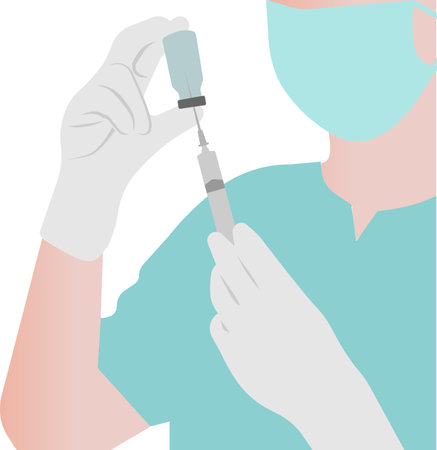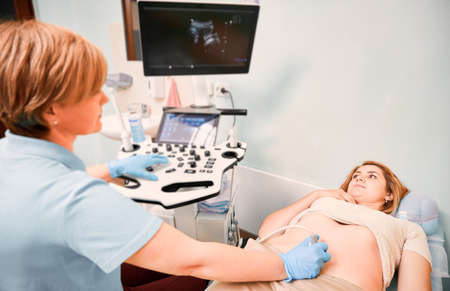Overview of Post-Pregnancy Body Changes in the UK
The journey through pregnancy and childbirth brings about significant physical changes for British women, many of which are shaped by both biological factors and cultural expectations. Common postnatal changes include abdominal muscle separation, skin laxity, stubborn fat deposits, and breast volume fluctuations. Stretch marks and altered body contours are also frequently reported. In the UK, these changes are often discussed openly in antenatal classes and support groups, reflecting a growing awareness of body positivity alongside traditional pressures to “bounce back” quickly after giving birth.
Culturally, there is a strong emphasis on health and well-being in postnatal recovery. The NHS offers structured postnatal care pathways, including regular check-ups and access to physiotherapy for pelvic floor rehabilitation. However, societal expectations—shaped by media portrayals and celebrity culture—can create conflicting pressures for new mothers. Many British women face the dual challenge of embracing their post-pregnancy bodies while also feeling compelled to restore their pre-pregnancy appearance as swiftly as possible.
This landscape has led to increased interest in both surgical and non-surgical treatments tailored to address post-pregnancy body concerns. As public attitudes continue to evolve, there is growing recognition that recovery should prioritise physical function and emotional well-being, not just aesthetics. Understanding these common changes and cultural nuances is crucial when considering the best practices for combining treatment options in the UK context.
2. Understanding Surgical Options: UK-Specific Approaches
In the United Kingdom, surgical post-pregnancy treatments have gained prominence as effective solutions for restoring body confidence after childbirth. Among the most sought-after procedures are abdominoplasty (commonly referred to as a “tummy tuck”) and various breast surgeries, such as augmentation, reduction, and mastopexy (breast lift). Each of these procedures addresses specific concerns related to abdominal muscle laxity, excess skin, and changes in breast volume or position following pregnancy and breastfeeding.
Best Practices for Surgical Procedures
Clinicians across the UK adhere to evidence-based protocols designed to maximise patient safety and optimise results. A multidisciplinary approach is often favoured, involving consultations with specialist plastic surgeons registered with the General Medical Council (GMC) and members of the British Association of Plastic, Reconstructive and Aesthetic Surgeons (BAPRAS). Comprehensive pre-operative assessments, clear communication regarding realistic outcomes, and stringent infection control measures form the backbone of best practice within NHS and private settings alike.
Surgical Treatments Overview
| Treatment Type | Main Objectives | Typical Recovery Period | Availability (NHS/Private) |
|---|---|---|---|
| Abdominoplasty | Remove excess skin & tighten muscles | 2–6 weeks | Mostly Private; Rarely NHS* |
| Breast Augmentation | Restore/enhance volume | 2–4 weeks | Private Only |
| Breast Reduction/Lift | Reshape/lift breasts; relieve discomfort | 2–6 weeks | NHS (strict criteria)/Private |
*Note: NHS provision is limited to medically necessary cases where physical or psychological health is significantly affected.
NHS vs. Private Care Distinctions
The distinction between NHS and private care is particularly significant in the UK context. While the NHS may fund reconstructive procedures if there is substantial clinical need—such as severe diastasis recti or chronic back pain due to excess tissue—cosmetic motivations are rarely covered. The private sector offers greater flexibility and shorter waiting times but comes with higher costs that patients must bear themselves. Both sectors are regulated by the Care Quality Commission (CQC), ensuring high standards of safety and patient care.
When considering surgical intervention post-pregnancy in the UK, it is essential to consult with qualified specialists who understand local regulatory frameworks, prioritise patient well-being, and tailor their approach according to each individual’s medical history and expectations. This foundation allows for safe integration with non-surgical treatments as part of a comprehensive post-pregnancy recovery plan.

3. Non-Surgical Solutions: Advancements and Preferences
Within the context of post-pregnancy body transformation, non-surgical treatments have gained significant traction across the UK. As patient demand shifts towards less invasive options that offer minimal downtime and reduced risk, clinics nationwide are investing in cutting-edge technologies to meet these expectations.
Radiofrequency Skin Tightening
Radiofrequency (RF) skin tightening has emerged as a front-runner for mothers seeking subtle yet noticeable improvements without surgery. This technology uses controlled heat to stimulate collagen production, resulting in firmer, smoother skin—particularly effective on the abdomen and thighs. Leading UK clinics often recommend RF as a first-line treatment for mild to moderate skin laxity post-childbirth, reflecting a wider trend towards natural-looking results achieved progressively over multiple sessions.
Injectables: Tailored Rejuvenation
Injectable treatments such as dermal fillers and botulinum toxin (commonly referred to by brand names such as Botox) are increasingly popular among postnatal patients looking to address facial volume loss or fine lines exacerbated by hormonal changes and sleep deprivation. British practitioners emphasise bespoke treatment plans, focusing on subtle enhancements that align with prevailing UK preferences for understated rejuvenation rather than dramatic alterations.
Physiotherapy and Core Rehabilitation
Physiotherapy holds a crucial role in holistic postnatal recovery, particularly for addressing diastasis recti (abdominal muscle separation), pelvic floor weakness, and general musculoskeletal discomfort. Many NHS trusts and private practices now offer specialised women’s health physiotherapy programmes tailored to new mothers, reflecting an increased awareness of functional recovery alongside aesthetic goals.
Emerging Trends and Patient Preferences
The contemporary UK patient is well-informed and values treatments supported by clinical evidence and peer reviews. There is a growing preference for combination therapy—integrating non-invasive modalities with lifestyle interventions such as nutrition advice and exercise guidance. Importantly, practitioners report higher satisfaction rates when patients are involved in shared decision-making processes, echoing the broader movement towards personalised medicine within UK aesthetics.
Accessibility and Regional Variations
Access to advanced non-surgical treatments varies across the UK, with metropolitan areas such as London, Manchester, and Edinburgh leading in both availability and innovation. However, the increasing popularity of these solutions is driving growth in regional clinics, making state-of-the-art care accessible to a wider demographic of post-pregnancy patients nationwide.
4. Optimising Outcomes: Combining Surgical and Non-Surgical Modalities
Achieving optimal post-pregnancy results in the UK increasingly relies on a strategic blend of surgical and non-surgical treatments. This integrative approach allows practitioners to address multiple concerns—such as abdominal laxity, stubborn fat deposits, and skin quality—while tailoring protocols to each patient’s individual recovery goals and lifestyle preferences.
Best Practices for Integration
When combining modalities, timing, sequencing, and patient selection are critical. Here are core best practices followed by leading UK clinics:
- Comprehensive Assessment: Initial evaluation should include a detailed medical history, physical examination, and realistic discussion of expectations to determine suitability for combined interventions.
- Treatment Sequencing: Typically, surgical procedures (e.g., abdominoplasty or liposuction) are performed first, allowing for core structural changes. Non-surgical options such as radiofrequency skin tightening or injectables can then enhance results after sufficient healing.
- Personalised Protocols: Protocols must be adapted based on factors like age, skin elasticity, and the extent of tissue changes post-pregnancy. This ensures safety and maximises efficacy.
Minimising Risk and Downtime
The key advantage of combining treatment types is to achieve dramatic improvements without subjecting patients to unnecessary risk or prolonged downtime. The following table summarises common combinations and their associated benefits:
| Treatment Combination | Main Benefits | Typical Downtime |
|---|---|---|
| Abdominoplasty + Radiofrequency Skin Tightening | Removes excess skin & tightens remaining tissue for smoother contours | 2-4 weeks (surgical), 0-2 days (non-surgical) |
| Liposuction + Cryolipolysis (Fat Freezing) | Targets larger fat deposits surgically; refines results with non-invasive sculpting | 1-2 weeks (surgical), minimal (non-surgical) |
| Surgical Lift + Dermal Fillers/Injectables | Restores volume while lifting sagging areas for a balanced rejuvenation | 2-3 weeks (surgical), none (injectables) |
Protocols Tailored to the UK Patient
UK-based practitioners often employ staged approaches aligned with NHS guidelines and private sector innovation. For example, initial surgical intervention may be planned during maternity leave, with follow-up non-surgical treatments scheduled flexibly to accommodate work or family commitments—a practical reflection of British work-life balance priorities.
Collaborative Care Approach
A multidisciplinary team—surgeon, aesthetic practitioner, and nurse—should coordinate care. This collaborative model not only streamlines recovery but also ensures comprehensive aftercare, thus promoting both patient safety and satisfaction.
5. Patient-Centred Care and Consultation Standards
The foundation of best practices for combining surgical and non-surgical post-pregnancy treatments in the UK is a robust commitment to patient-centred care. UK clinical standards place a strong emphasis on comprehensive patient assessment as the initial step. This involves not only evaluating the physical health and medical history of each patient but also understanding their unique post-pregnancy concerns, lifestyle factors, and personal goals.
Thorough Patient Assessment
Practitioners are expected to undertake detailed consultations, which may include physical examinations, psychological assessments, and discussions about previous treatments or underlying health conditions. By adopting a holistic approach, clinicians ensure that no aspect of the patients wellbeing is overlooked, paving the way for safe and effective treatment plans.
Informed Consent: A Legal and Ethical Imperative
Informed consent is regarded as both a legal requirement and an ethical standard within UK practice. Patients must be provided with clear, jargon-free information about all available options, including potential risks, benefits, downtime, and realistic outcomes associated with both surgical and non-surgical procedures. The process also encourages patients to ask questions and voice any concerns before proceeding, strengthening trust between clinician and patient.
Tailored Treatment Plans
A hallmark of British clinical practice is the individualisation of care plans. Rather than adopting a one-size-fits-all approach, practitioners collaborate closely with patients to design bespoke treatment pathways that align with their needs and expectations. This may involve sequencing procedures over time or combining therapies in a manner that maximises safety and efficacy while minimising disruption to family life.
Upholding UK Clinical Excellence
Adherence to these consultation standards not only supports optimal outcomes but also reinforces the reputation of UK clinics for delivering exemplary care in post-pregnancy body contouring. Continuous professional development, peer review, and regulatory oversight further underpin these high standards, ensuring that every patient journey remains safe, transparent, and patient-focused.
6. Navigating UK Regulations and Ethical Considerations
When combining surgical and non-surgical post-pregnancy treatments in the UK, adherence to stringent clinical governance frameworks is paramount. The Care Quality Commission (CQC) sets out essential standards for safety, effectiveness, and person-centred care in all regulated health and cosmetic procedures. Practitioners must ensure that their clinics are registered and regularly inspected to comply with these requirements.
On a professional level, clinicians are expected to follow the guidelines issued by the General Medical Council (GMC), Nursing and Midwifery Council (NMC), and other relevant bodies. This includes robust consent protocols, transparent communication about risks and benefits, and ensuring that all interventions are evidence-based.
Clinical Governance in Combined Treatments
The integration of surgical and non-surgical modalities necessitates multi-disciplinary collaboration. UK best practice recommends regular case reviews, outcome audits, and continuous professional development to maintain high standards of care. Record-keeping must be meticulous, enabling traceability and safeguarding patient welfare throughout their treatment journey.
Safety Standards: Protecting Patients
The Medicines and Healthcare products Regulatory Agency (MHRA) oversees the use of devices and medicines in aesthetic medicine. Only approved technologies and substances should be used in post-pregnancy care. Infection control protocols—aligned with National Institute for Health and Care Excellence (NICE) guidance—are mandatory, particularly where surgical interventions are involved.
Ethical Considerations Unique to Post-Pregnancy Treatments
Clinicians must recognise the vulnerability of patients seeking post-pregnancy procedures. Informed consent should go beyond legal compliance, addressing emotional wellbeing, realistic expectations, and potential psychological impacts. It is vital to avoid any form of coercion or overselling, especially given the sensitive context of body image after childbirth.
Furthermore, UK practitioners should provide access to independent support or counselling services when necessary. Clear aftercare instructions and open channels for follow-up reinforce ethical responsibility while fostering trust between practitioner and patient.
Ultimately, navigating the regulatory landscape in the UK means not only meeting statutory obligations but also upholding the highest levels of professionalism and ethical integrity in every aspect of combined post-pregnancy treatment provision.
7. Emerging Trends and Future Directions in the UK
The landscape of post-pregnancy body treatments in the UK is evolving rapidly, driven by both technological innovation and changing social attitudes. Recent years have seen a surge in minimally invasive procedures that complement traditional surgical methods, such as advanced radiofrequency devices, ultrasound-based fat reduction, and regenerative injectables. These technologies offer British women more personalised, discreet options with reduced downtime, aligning well with busy lifestyles and growing demand for subtle, natural-looking outcomes.
Shifting Cultural Perceptions
There is a notable shift in how post-pregnancy treatments are perceived across the UK. The narrative is moving away from purely aesthetic motivations towards holistic well-being and empowerment. Women are increasingly encouraged to make informed decisions about their bodies without stigma. This cultural evolution is further supported by wider public discussions around mental health, body positivity, and patient autonomy.
Integration of Multi-Disciplinary Care
Best practices now emphasise collaboration between plastic surgeons, dermatologists, nutritionists, physiotherapists, and psychological counsellors. This multidisciplinary approach ensures that physical recovery after pregnancy is complemented by emotional and nutritional support—reflecting a uniquely British commitment to comprehensive patient care within both private clinics and NHS settings.
Predictions for the Future
Looking ahead, experts predict that technological advancements such as AI-driven treatment planning and personalised regenerative therapies will become mainstream in the UK market. There is also an expectation for stricter regulation of non-surgical providers to ensure safety and consistency of outcomes. Moreover, as awareness grows, more NHS trusts may consider incorporating certain non-surgical post-pregnancy treatments into their service offerings where clinically justified.
Ultimately, the future of post-pregnancy body treatments in Britain lies in combining innovation with empathy—offering tailored solutions that respect individual journeys while leveraging the very latest medical advances. As societal attitudes continue to progress, these integrated pathways are set to become standard practice, supporting new mothers in reclaiming confidence and well-being on their own terms.


